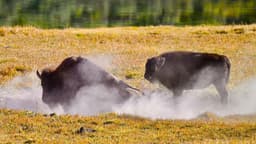Home / Environment / Captive Breeding Boosts Endangered Giant Otter Population
Captive Breeding Boosts Endangered Giant Otter Population
20 Oct
Summary
- Three giant otter cubs born at New Forest Wildlife Park
- Otters face threats like habitat loss, hunting, and pollution in the wild
- Park's population now over half of UK's entire captive giant otter population

In a significant development for the conservation of endangered giant otters, the New Forest Wildlife Park has welcomed the birth of three giant otter cubs through its breeding program. As of October 20th, 2025, the park's giant otter population has now grown to over half of the UK's entire captive population of 21 individuals.
The newborn cubs, born to parents Ibera and Simuni on August 2nd, 2025, have passed their health checks and are thriving under the care of the park's dedicated team. This latest addition marks another important step in the ongoing efforts to protect the giant otter, a species facing increasing threats in its native Amazon basin habitat.
Giant otters are native to the Amazon region and are endangered due to a range of factors, including habitat destruction, illegal hunting, and pollution. The successful breeding program at the New Forest Wildlife Park has provided a crucial lifeline for this remarkable species, offering hope for its long-term survival.




